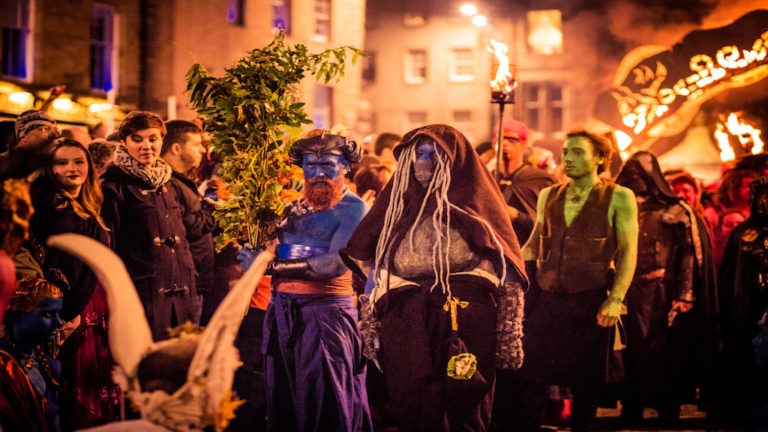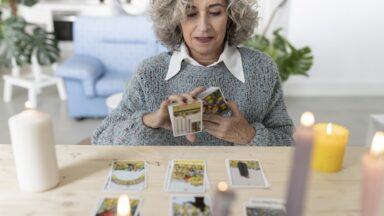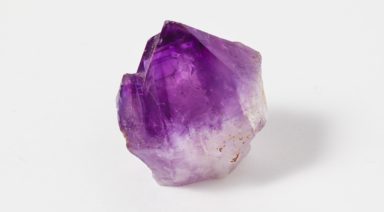Samhain Unveiled: Tracing its Origins and Time-Honored Rituals

Samhain is a time-honored tradition followed by witches, Wiccans, ancient druids, and countless other modern pagans across the world, and celebrated as October turns to November. Samhain is a festival of the dead, meaning “Summer’s End,” and though you’re probably tempted to pronounce it “sam-hane,” it’s actually pronounced saah-win or saah-ween.
What is a Samhain Celebration?
Samhain is a sacred and ancient Celtic festival that marks the end of the harvest season and the beginning of winter. It holds deep spiritual significance as it honors our ancestors, acknowledges the time of year when the veil between the physical and spiritual worlds is thinnest, and embraces the mysteries of life and death. Samhain typically takes place from October 31st to November 1st and involves various rituals and traditions, such as ancestor veneration, divination, bonfires, costume dressing, feasting, and releasing and renewing rituals. It’s also celebrated as the beginning of the spiritual new year for Wicca practitioners, which is also why it’s nicknamed “The Witches’ New Year.” Samhain serves as a time of reflection, transformation, and connection with the natural and supernatural realms, reminding us of the cyclical nature of existence and the eternal bond with our ancestral heritage. If this celebration sounds oddly familiar, it’s because our modern Halloween, although different, originates from this Gaelic tradition. Historically, most American Halloween traditions were brought over by Irish and Scottish immigrants.
How to Celebrate Samhain
Samhain is typically celebrated by preparing a dinner to celebrate the harvest. The holiday is meant to be shared with those who have passed on as well as those still with us. Set a place at the table for those in the spiritual plane, providing an offering for them upon every serving throughout the meal. In addition to those who have passed, invite friends and family to enjoy the feast with you. Typical beverages include mulled wine, cider, and mead, and are to be shared with the dead throughout the meal.
Halloween Similarities & Differences
Despite occurring at similar times and containing similar themes, Samhain and Halloween are not the same holiday. Halloween, short for All Hallow’s Eve, is celebrated on and around Oct. 31 and tends to be more family-focused. On the other hand, Samhain is more religious in focus and spiritually observed by practitioners.
There are some more light-hearted observances in honor of the dead through Samhain, but the underlying tone of Samhain is one of a serious religious practice rather than a light-hearted make-believe re-enactment. Today’s Pagan Samhain rites are benevolent, and although they are somber and centered on death, they do not involve human or animal sacrifices, as some rumors may claim. Another difference between Samhain and Halloween is that most Samhain rituals are held in private rather than in public.
When to Start the Celebrations
If you want to start honoring this pagan tradition, you might wonder when to start. The timing of contemporary Samhain celebrations varies according to spiritual tradition and geography. Practitioners state to celebrate Samhain over several days and nights, and these extended observances usually include a series of solo rites as well as ceremonies, feasts, and gatherings with family, friends, and the spiritual community.
In the northern hemisphere, many Pagans celebrate Samhain from sundown on October 31 through November 1. Others hold Samhain celebrations on the nearest weekend or on the Full or New Moon closest to this time. Some Pagans observe Samhain a bit later, or near November 6, to coincide more closely with the astronomical midpoint between the Autumn Equinox and Winter Solstice. Most Pagans in the southern hemisphere time their Samhain observances to coincide with the middle of their Autumn in late April and early May rather than at the traditional European time of the holiday. In the end, it’s really up to you!
Honoring Life, Death, & Nature
Samhain isn’t necessarily a creepy, morbid holiday obsessed with death, as some may conclude. Instead, it reaches for themes deeper than that, tying in with nature’s rhythms. In many places, Samhain coincides with the end of the growing season. Vegetation dies back by killing frosts, and therefore, literally, death is in the air.
This contributes to the ancient notion that at Samhain, the veil is thin between the world of the living and the realm of the dead, facilitating contact and communication with the dead. For those who have lost loved ones in the past year, Samhain rituals can be an opportunity to bring closure to grieving and to further adjust to their being in the Otherworld by spiritually communing with them. However, it’s also a way to appreciate life when you get right down to it.
There are many rituals you can partake in to celebrate Samhain. Here are just a few ideas (and none of them involve life sacrifice):
13 Samhain Rituals & Traditions
1. Samhain Nature Walk
Take a meditative walk in a natural area near your home. Observe and contemplate the colors, aromas, sounds, and other sensations of the season. Experience yourself as part of the Circle of Life and reflect on death and rebirth as being an important part of nature. If the location you visit permits, gather some natural objects and, upon your return, use them to adorn your home.
2. Set Up A Samhain Altar
If you’re new to the pagan tradition and don’t have a permanent altar in place, you can easily set up a table to leave in place for the three days before Samhain. Decorate the altar with symbols of late fall, such as:
• Skulls, skeletons, grave rubbings, ghosts
• Harvest food such as pumpkins, squash, turnips, root vegetables
• Nuts and berries, dark breads
• Dried leaves and acorns
• A cornucopia filled with an abundance of fruit and veggies
• Mulled cider, wine, or mead
3. Dumb Supper Ceremony
A Dumb Supper is a silent meal traditionally held on the night of Samhain. During this ritual, participants set a place at the table for deceased loved ones, leaving an empty chair and serving their favorite foods. The supper is conducted mostly in silence as a way to invite and commune with the spirits of the departed, allowing them to partake in the meal and share their presence during this spiritually significant time.
Start by preparing a meal for the family, deceased loved one(s), and your pagan deity, focusing on fruits, vegetables, and wild game meat if available. Include a loaf of dark bread like rye or pumpernickel and a cup of apple cider or wine. Set the dinner table with candles and a fall centerpiece, and put all the food on the table at once. Don’t forget to reserve a spot for the deceased and pagan deity, so consider the dinner table a sacred space.
Before eating and drinking, gather everyone around the table and say this, “Tonight is the first of three nights on which we celebrate Samhain. It is the end of the harvest, the last days of summer, and the cold nights wait on the other side for us. The bounty of our labor, the abundance of the harvest, and the success of the hunt all lie before us. We thank the earth for all it has given us this season, and yet we look forward to winter, a time of sacred darkness.”
Take the cup of cider or wine and lead everyone outside. Make this a ceremonial and formal occasion. Head to your garden (if you don’t have one, find a grassy place in your yard). Each person takes the cup in turn and sprinkles a little bit of cider onto the earth, saying, “Summer is gone, winter is coming. We have planted and we have watched the garden grow, we have weeded, and we have gathered the harvest. Now it is at its end.”
Collect any yard trimmings or dead plants and use them to make a straw man or woman. If you follow a more masculine path, he may be your King of Winter and rule your home until spring returns. If you follow the Goddess in her many forms, make a female figure to represent the Goddess as a witchy hag or crone in winter. Once that is done, go back inside and bring your deity into your home. Place it on your table and prop it up with a plate of its own, and when you sit down to eat, serve it first.
Begin your silent meal with the breaking of the dark bread, and make sure you toss a few crumbs outside for the birds afterward. Keep the King or Goddess of Winter in a place of honor all season long — you can put it back outside in your garden on a pole to watch over next spring’s seedlings and eventually burn it at your Beltane celebration. When you are finished with your meal, put the leftovers out in the garden as another offering for the dead.
4. Make an Ancestors Altar
Honor your deceased family members with this ceremony. Gather photographs, heirlooms, and other mementos of deceased family, friends, or even pets. Arrange them on a table, dresser, or other surfaces, along with several votive candles. Light the candles in their memory; while you do so, speak their names out loud, express well wishes, and thank them for being part of your life or lineage. Sit quietly and pay attention to what you experience. Note any messages you receive in your journal. This Ancestors Altar can be created just for Samhain or kept year-round.
5. Guide the Spirits
Place a white seven-day candle in the window to guide the dead to the Spirit World. Light the candle and speak these words, “O little flame that burns so bright, be a beacon on this night. Light the path for all the dead, that they may see now what’s ahead. And lead them to the Summerland and shine until Pan takes their hands. And with Your light, please bring them peace, that they may rest and sleep with ease.”
6. Visit a Cemetery
Another way to honor the passing of family and friends is to visit and tend their gravesite at a cemetery. Call to mind memories and consider ways the loved one continues to live on within you. Place an offering there, such as fresh flowers, dried herbs (rosemary is one great choice), or freshwater.
7. Hit ‘Pause’
As we mentioned, Samhain is also a time to celebrate life in contrast to death, which makes it a great moment to stop and introspect. Reflect on you and your life over the past year. Review journals, planners, photographs, blogs, and other notations you have created during the past year. Consider how you have grown, accomplishments, challenges, adventures, travels, and learnings. Meditate. Journal about your year in review, your meditation, and your reflections.
8. Hold a Séance
Also as we mentioned, Samhain is thought to be a time of little distance between the living and the dead. If there’s anyone on the other side you’d like to communicate with, now is an excellent time, according to the pagan tradition.
9. Bonfire Magick
Kindle a bonfire outdoors when possible or kindle flames in a fireplace or a small cauldron. Write down an outmoded habit that you wish to end and cast it into the Samhain flames as you imagine release. Imagine yourself adopting a new, healthier way of being as you move around the fire clockwise.
10. Divinatory Guidance
Using tarot, runes, scrying, or some other method of divination, seek and reflect on guidance for the year to come. Write a summary of your process and messages. Select something appropriate to act upon and do it.
11. Divine Invocations
Honor and call upon the divine in one or more sacred forms associated with Samhain, such as the Crone Goddess and Horned God of Nature. Invite them to aid you in your remembrance of the dead and your understanding of the cycle of life, death, and rebirth. If you have lost loved ones in the past year, ask these deities to comfort and support you.
12. Herbs and Spices
Many plants that tie in closely with Samhain, to name a few: allspice berries, broom, catnip, mountain ash berries, mugwort, mullein, oak leaves, acorns, rosemary, sage, pine cones, and straw. Find creative (and safe; research each before consuming) ways to use them in your cooking and around your house as decorations.
13. Community Connections
Connect with others. Join in a group ritual in your area. Organize a Samhain potluck in your home. Research old and contemporary Samhain customs in books, periodicals, online, and through communications with others. Exchange ideas, information, and celebration experiences. Regardless of whether you practice solo or with others, as part of your festivities, reflect for a time on being part of the vast network of those celebrating Samhain all over.
Interested in more? Check out our Halloween Collection!
Am I a Mystic? Signs & Personality Traits Most Mystics Share

Mysticism transcends traditional religious boundaries, offering a deeply personal and direct connection to the divine or ultimate reality. Mystics seek profound spiritual experiences that go beyond conventional doctrines, emphasizing personal insight and unity with the cosmos. This exploration delves into the essence of mysticism, its presence across various spiritual traditions, key personality traits of mystics, signs that may indicate a mystical inclination and guidance on embracing a mystical path.
What Is a Mystic?
A mystic is an individual who pursues a direct, experiential understanding of the sacred, unmediated by established religious rituals or intermediaries. This pursuit involves transcending traditional belief systems, moving beyond intellectual reasoning, and dissolving identification with the ego self. Mystics often experience a profound sense of unity with the divine, nature, or the cosmos, seeking to connect with the ultimate reality that underlies all existence.




































